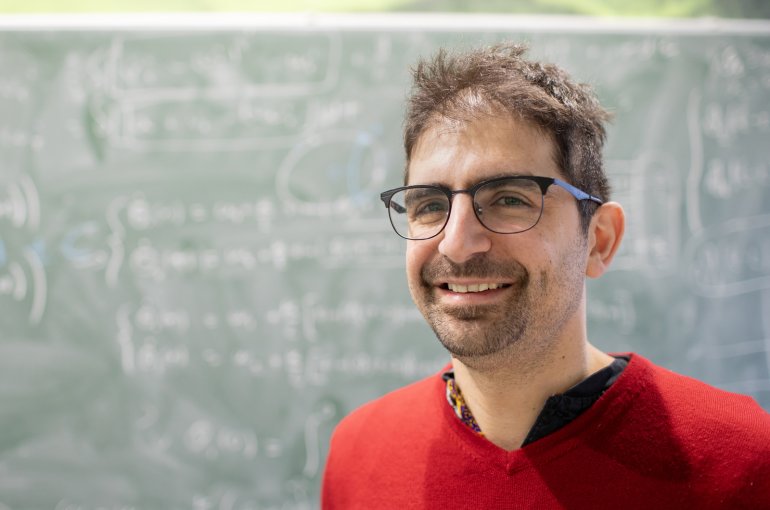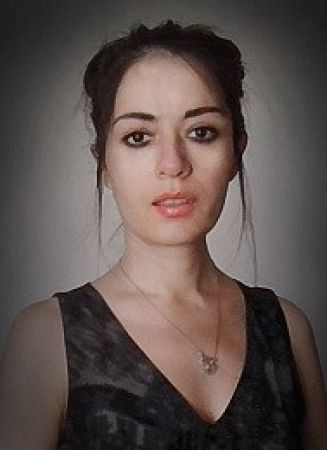Summer School
The IPCO summer school will take place before the conference on June 9-10 2025.
Materials
- Thomas Rothvoss: Slides , Lecture Notes 1 , 2
- Aida Khajavirad: Slides
- Daniel Dadush: Slides 1 , 2 , 3 , Lectures Notes 1 , 2 , 3
Program
Monday, June 9:
- 8:00 — 8:45: Registration and breakfast
- 8:45 — 9:00: Opening Remarks
- 9 — 10am: Thomas Rothvoss – Introduction to Lattices
- 10 — 10:30: Coffee break
- 10:30 — 11:30am: Daniel Dadush – Straight-line complexity of linear programs
- 11:30 — 1:30pm: Lunch break
- 1:30 — 3:00pm: Aida Khajavirad – Binary polynomial optimization through a hypergraph theoretic lens: theory, algorithms, and applications
- 3 — 3:30pm: Coffee break.
- 3:30 — 4:30pm: Thomas Rothvoss – The Reverse Minkowski Theorem
Tuesday, June 10:
- 8:30 — 9: Breakfast
- 9 — 10am: Thomas Rothvoss – The Subspace Flatness Conjecture and Faster Integer Programming
- 10 — 10:30: Coffee break
- 10:30 — 11:30am: Daniel Dadush – Straight-line complexity of linear programs
- 11:30 — 1:30pm: Lunch break
- 1:30 — 3:00pm: Aida Khajavirad – Binary polynomial optimization through a hypergraph theoretic lens: theory, algorithms, and applications
- 3 — 3:30pm: Coffee break.
- 3:30 — 4:30pm: Daniel Dadush – Straight-line complexity of linear programs
Speakers and Abstracts
Daniel Dadush

Title: Straight-line complexity of linear programs
Path following interior point methods (IPM) together with the simplex method are the two most popular techniques for solving linear programs. While the length of a traversed simplex path has long been viewed as a good combinatorial complexity measure for the simplex method, such a complexity measure for IPM’s has been missing until relatively recently. In this lecture series, I will introduce the notion of straight line complexity (SLC) for linear programs, which provides strong good combinatorial bounds on the iteration complexity of IPMs.
In the first lecture, I will present an abstraction of IPMs that lends itself naturally to an analysis via SLC, and explain the general properties of SLC and its relation to the simplex method. In the second lecture, I will present upper bounds on SLC based on well-known linear programming condition measures and the structure of the constraint matrix, as well as highlight a worst-case exponential lower bound. In the last lecture, I will present a primal-dual IPM whose iteration complexity is upper bound by SLC up to a polynomial factor in the number of inequalities.
Aida Khajavirad

Title: Binary polynomial optimization through a hypergraph theoretic lens: theory, algorithms, and applications
We define the multilinear polytope as the convex hull of a set of binary points satisfying a collection of multilinear equations. This set corresponds to the convex hull of the feasible region of a linearized binary polynomial optimization problem. By introducing a hypergraph representation framework, we relate the complexity of the facial structure of the multilinear polytope to the acyclicity degree of the corresponding hypergraph. We then demonstrate how different degrees of acyclicity can be used to obtain compact formulations for the multilinear polytope in the original or in an extended space. This in turn enables us to identify several classes of polynomial-time solvable binary polynomial optimization problems. We then introduce the pseudo-Boolean polytope, a generalization of the multilinear polytope that can be modeled via signed hypergraphs. This general framework enables us to unify and extend prior results and obtain polynomial size extended formulations for the pseudo-Boolean polytope of a large class of signed hypergraphs whose underlying hypergraphs contain cycles. We then present some necessary conditions for polynomial-time solvability of binary polynomial optimization as well as lower bounds on the extension complexity of the pseudo-Boolean polytope. Moreover, we discuss the implications of our findings on a number of applications such as inference in higher-order graphical models and maximum satisfiability problems. We conclude by discussing some open questions and directions of future research.
Thomas Rothvoss

Lecture 1 - Introduction to Lattices
In this lecture, we will give a brief introduction to the lattices and discuss the seminal result of Micciancio and Voulgaris (2010) that gives a (2^{O(n)}) time algorithm for computing a closest vector. We will also discuss the result by Dadush and Vempala (2012) to enumerate all the lattice points in a general convex body K in time 2^O(n) times the maximum number of points that any translate may contain.
Lecture 2 - The Reverse Minkowski Theorem
We explain the Reverse Minkowski Theorem due to Regev and Stephens- Davidowitz (2017). Formally the
result states that for any lattice Lambda that does not contain a sublattice of determinant less than 1, the sum of Gaussian weights satisfies rho_1/t(Lambda) <= 3/2 where t = Theta(log n).
In particular this implies that, any such lattice contains at most a quasi- polynomial number of vectors of length at most O(1).
The result is based on advanced concepts from convex geometry.
Lecture 3 - The Subspace Flatness Conjecture and Faster Integer Programming
In a seminal paper, Kannan and Lovász (1988) considered a quantity μ_KL(Λ,K) which denotes the best volume-based lower bound on the covering radius μ(Λ,K) of a convex body K with respect to a lattice Λ. Kannan and Lovász proved that μ(Λ,K)≤n⋅μ_KL(Λ,K) and the Subspace Flatness Conjecture by Dadush (2012) claims a O(log(n)) factor suffices, which would match the lower bound from the work of Kannan and Lovász. We settle this conjecture up to a constant in the exponent by proving that μ(Λ,K)≤O(log^3(n))⋅μ_KL(Λ,K). Our proof is based on the Reverse Minkowski Theorem due to Regev and Stephens-Davidowitz (2017). Following the work of Dadush (2012, 2019), we obtain a (log(n))^O(n)-time randomized algorithm to solve integer programs in n variables. Another implication of our main result is a near-optimal flatness constant of O(n log^3(n)).